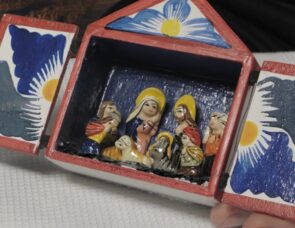Using drama to explore a biblical picture.

On your marks
This is a great way of getting to know a piece of art and working imaginatively with the biblical story it represents. It’s based on an idea of Gaynor Davies and many thanks to her.
You might choose to do this simply as a piece of work in class or your group, just for fun. With more rehearsal, it also makes a striking way of presenting the story for an assembly or as part of a service, combining art, drama and RE.
Get set
You’ll need a picture of the story you’re exploring. The National Gallery has a wonderful stock of downloadable pictures if you go to The National Gallery website.
You could also do a search on the net for the name of the story and click on the images tab.
Go!
1 Display the picture. (An electronic whiteboard, digital projection or OHP are ideal, but you can give out paper copies instead.)
2 Cover it up after a minute and ask what the group remembers from the picture.
3 Display it again and talk about the details, colours, people, setting and story that it shows. Tell the story if it is an unfamiliar one.
4 Say that you’re going to bring this story to life together. One person goes to stand in your acting space and takes the position of one of the characters in the picture. The rest of the group act as directors and organize the person until the live person and the picture are as similar as possible (stance, expression, props).
5 Repeat with the other characters in the picture until there is a person representing each character, frozen in the right position. Say ‘1 2 3 Freeze!’ to give some urgency to the picture. ‘1 2 3 Relax!’ allows them to ‘stand at ease’ still roughly in position. It’s worth practising getting back in position a few times until they can remember exactly what they are supposed to do.
6 Now ask each person to think of an action for their character. Run through these actions in turn.
7 Now each person thinks of a word, line or sound for their character. Run through these in turn.
8 Now run through the actions and sounds together in turn. Rearrange any that aren’t yet in a logical order until it runs as a short stylised play.
9 You can extend this by using any of the following:
- have people stand behind the actors, voicing the thoughts of the character.
- devise the scene that might have happened just before or just after this scene. Run them together as a play.
- video the scene and use as a basis for discussion.
- include just the actions as a repeated mime to go alongside a narration of the story read from the Bible.
- draw the picture you’ve made, or digitally photograph it and add speech or thought bubbles for the characters.
- Hot seat the characters.

 Download
Download